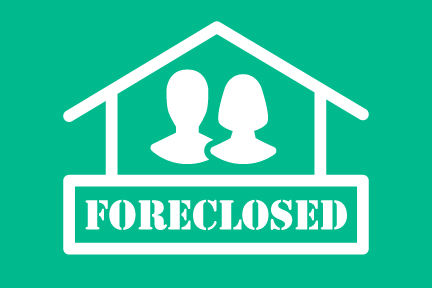How to Stay in Your Home After the Initiation of Foreclosure Proceedings

There are basically two different types of foreclosure jurisdictions: judicial foreclosure jurisdictions and non-judicial foreclosure or power of sale jurisdictions.
Judicial Foreclosure
In states where judicial foreclosures are required—Connecticut, Delaware, Florida, Hawaii, Illinois, Indiana, Iowa, Kansas, Kentucky, Louisiana, Maine, New Jersey, New Mexico, New York, North Dakota, Ohio, Oklahoma, Pennsylvania, South Carolina, Vermont, and Wisconsin)—the lender must use the court system to begin foreclosure proceedings, and the court oversees the foreclosure process. If the homeowner decides to hire an attorney and litigate the foreclosure, these proceedings can take well over a year to complete.
Non-Judicial Foreclosure/ Power of Sale Foreclosure
In states that allow non-judicial or power of sale foreclosures—Alabama, Alaska, Arizona, Arkansas, California, Colorado, District of Columbia, Georgia, Idaho, Maryland, Massachusetts, Michigan, Minnesota, Mississippi, Missouri, Montana, Nebraska, Nevada, New Hampshire, North Carolina, Oregon, Rhode Island, South Dakota, Tennessee, Texas, Utah, Virginia, Washington, West Virginia, and Wyoming—the foreclosure process can move much more quickly than judicial foreclosure states. In non-judicial foreclosure states, the trustee can initiate a foreclosure sale of the home without having to file a lawsuit or go to court, with little involvement from the court system. While this process is quicker than a judicial foreclosure, the backlog of foreclosures in many states can delay the process significantly.
So how can you stay in your home after foreclosure proceedings have started?
Know your Rights
Some states have a right of redemption that allows the homeowner the right to reclaim their property by making a payment in full of the sum of the unpaid loan plus costs. Most foreclosures are sold at auction, and before the auction, the lender must publish a notice of sale for four consecutive weeks in the newspaper where the property is located. Also, prior to the foreclosure sale, the homeowner may be able to delay foreclosure by applying for a loss mitigation program with the lender. A loss mitigation program is when the lender works with borrowers that are delinquent on their home loans, and often times includes modifying the terms of the loan or refinancing.
Bankruptcy
Bankruptcy is a last resort; however, bankruptcy will stop foreclosure proceedings immediately. When a homeowner files for bankruptcy, the court issues an order than includes an automatic stay prohibiting all creditors from collecting debts from the debtor. If your home is scheduled for a foreclosure sale, the sale will be legally postponed while the bankruptcy is pending. The lender may, however, file a motion to lift the stay, asking the court’s permission proceed with the sale.
Seek Help
A vital step to staying in a home under foreclosure as long as possible is seeking professional assistance from a knowledgeable attorney. Foreclosure rules and regulations vary from state to state, and can be convoluted and difficult to navigate. An attorney will provide the knowledge and expertise to delay, and perhaps, even halt foreclosure proceedings, allowing the homeowner to keep his or her home, or, at the least, stay in the home as long as possible.
If you are having trouble keeping up with your mortgage payments or foreclosure proceedings have started, find an experienced attorney by quickly posting a short summary of your legal needs on Legal Services Link and let the perfect attorney come to you!
Do You Need An Attorney?
If so, post a short summary of your legal needs to our site and let attorneys submit applications to fulfill those needs. No time wasted, no hassle, no confusion, no cost.

